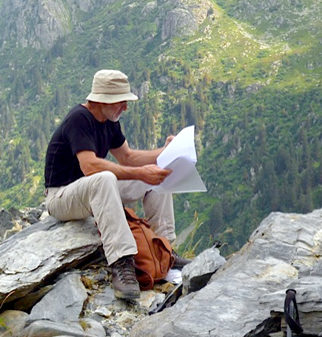
Office hours: Mon - Fri 09:00 - 17:30; Sat 09:30 - 13:00
Office hours: Mon - Fri 09:00 - 17:30; Sat 09:30 - 13:00
Office hours: East Coast USA: Mon - Fri 09:00 - 17:30 (04:00 - 12:30 local time); Sat 09:30 - 13:00 (04:30 - 08:00)
West Coast USA: Mon - Fri 09:00 -17:30 (01:00 - 09:30 local time); Sat 09:30 - 13:00 (01:30 - 05:00)
Office hours: Ottawa: Mon - Fri 09:00 - 17:30 (04:00 - 12:30 local time); Sat 09:30 - 13:00 (04:30 - 08:00)
Vancouver: Mon - Fri 09:00 - 17:30 (01:00 - 09:30 local time); Sat 09:30 - 13:00 (01:30 - 05:00)
Office hours: Canberra: Mon - Fri 09:00 - 17:30 (20:00 - 04:30 local time); Sat 09:30 - 13:00 (20:30 - 24:00)
Office hours: Mon - Fri 09:00 - 17:30 (22:00 - 06:30 local time); Sat 09:30 - 13:00 (22:30 - 02:00)
Office hours: Mon - Fri 09:00 - 17:30 (check internet for local time equivalent); Sat 09:30 - 13:00
Cornwall – a land of inspiration for artists
The far west of Cornwall has been a haven for artists for many years, attracted by the sparkling light and spectacular scenery. Discover them as you walk with On Foot Holidays through the places that inspired them and where they chose to work.
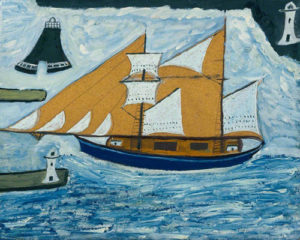
Alfred Wallis – The Blue Ship
Painters have been drawn to the harbour town of St Ives for more than 200 years – JMW Turner visited in the summer of 1811 and produced a series of landscapes here and further round the coast including Land’s End and St Michael’s Mount. The arrival of the railway in the 1870s brought more visitors, including James Whistler and Walter Sickert who praised the clarity of the light. Images of coastal scenes made their way to the Royal Academy in London and other prestigious European venues.
From the 1920s St Ives became an important centre for the arts, with the establishment of Bernard Leach’s pottery and the arrival of notable artists such as Dame Barbara Hepworth, Ben Nicholson and Christopher Wood. As the fishing industry declined, their support of the local economy was crucial, and they found that empty sail lofts made excellent studios. A local amateur artist and retired fisherman, Alfred Wallis, was painting scenes of St Ives in a naïve style that influenced Nicholson in particular. Together with younger artists arriving in the town, the “St Ives School” developed as a catch-all term for those taking inspiration from the forms and colours of West Cornwall as well as an interest in abstract painting.
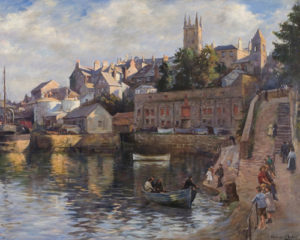
Stanhope Forbes – Abbey Slip
Painters also gravitated to Newlyn in the late 19th and early 20th centuries, led by Walter Langley, Edwin Harris, Frank Bramley, Stanhope Forbes and Elizabeth Forbes – the latter two establishing an art school in the town. With many others that followed, the colony became known as the Newlyn School. Their paintings created en plein air (outdoors) of the everyday lives of the fisherman and their families now command considerable sums. Newlyn was also notable for the production of copperwork that was among the most outstanding of the ‘arts and crafts’ tradition, some of which can be seen in the Penlee House Museum – Michael Johnson continues this craft at The Copper Works in Newlyn.
Some artists of the Newlyn School drifted to the tiny valley and cove of Lamorna, a little further west, including SJ ‘Lamorna’ Birch, Sir Alfred Munnings, Dame Laura Knight and Harold Knight. Views of this stretch of coast are easily recognisable in their paintings, and the area still has a strong artistic community.
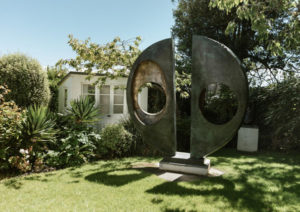
The garden at Barbara Hepworth Museum
Where to find art created in Cornwall while walking On Foot Holidays’ Land’s End Circuit
St Ives:
Barbara Hepworth Museum and Sculpture Garden, St Ives – Hepworth’s home and studio, with sculptures displayed in the little garden (above).
Tate St Ives – a branch of the major London gallery, featuring works by modern artists associated with the area.
Bernard Leach’s pottery is still a working studio as well as a museum and shop.
Many smaller galleries can be found in the narrow streets of St Ives – just wander and discover!
Penzance and Newlyn:
Penlee House Museum and Gallery, Penzance – home to a collection of paintings from the Newlyn School and Lamorna artists.
Lighthouse Gallery in Penzance showcases local artists, if you’re looking for something to take home.
Newlyn Art Gallery and its sister space The Exchange in Penzance host exhibitions of contemporary art from the region and further afield.
The patchwork patterns of fields that make up much of Britain’s farmland are among its most endearing features, but the hedges, walls and fences that mark them out can be a challenge to walkers. Over the centuries, farmers and landowners have developed some imaginative ways to solve the conundrum of allowing walkers through on a right of way without giving animals an opportunity to escape!
These gates and stiles are usually simple and universal in style, but sometimes more complex or characteristic of a region of the country, making for a wonderful variety of crossings that you will find along the footpaths. Here are some types that you’re likely to encounter when walking On Foot routes in England and Wales.
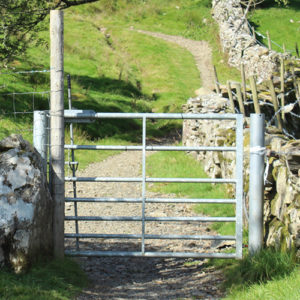
Pedestrian gate – of varying width and construction, these sometimes have a long, spring-loaded arm attached to the latch so that horse riders can open the gate without dismounting.
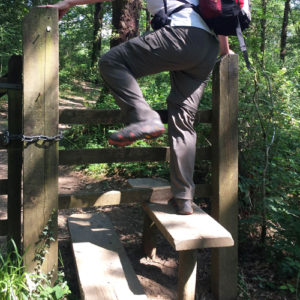
Stile (or step stile) – the most common way to cross a fence line and usually of wooden construction, sometimes with a helpful hatch at ground level for dogs.
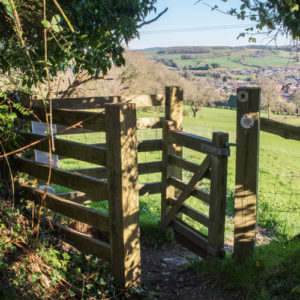
Kissing gate – a gate that swings freely across a V-shaped or D-shaped opening in the fence, just ‘kissing’ the post on either side. Easy for humans, but tricky for cattle. Of course, there are other theories behind the name, but whether you want to kiss your walking companion(s) each time you pass through a gate is up to you!
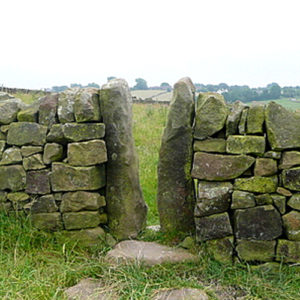
Squeeze stile – a narrow gap lined by two stone slabs or posts, sometimes v-shaped and sometimes with a small gate. More complex versions may have sides that can be pushed apart to widen the gap.
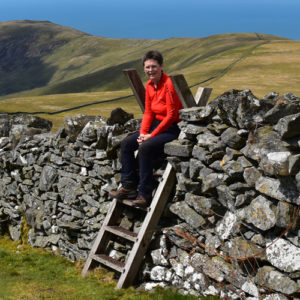
Ladder stile – a pair of wooden ladders up and over a dry-stone wall. They make a good spot to sit and rest for a moment too!
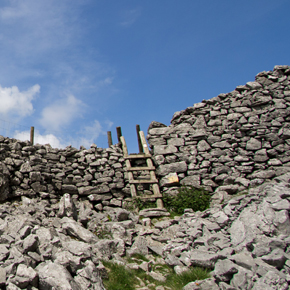
This is ‘Beggar’s Stile’ at the head of Crummack Dale (on Ingleborough Circuit in the Yorkshire Dales), which, unusually, is named on the Ordnance Survey map. The ladder is shorter on the far side, leading to the magnificent Thieves Moss – a natural amphitheatre hidden from the valley below that is likely to have got its name from its use for the sale of stolen sheep and cattle.
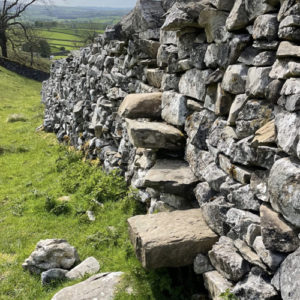
Stone stile – made of large slabs cantilevered on both sides of a stone wall. Need to be negotiated with care! In Wales the slabs are often rustically uneven, and you’ll need to step over the vertical stones on the top of the wall.
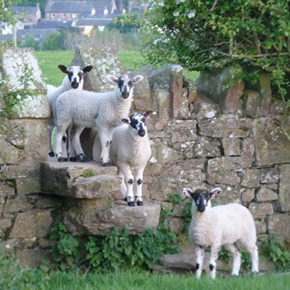
In Yorkshire, however, you’re more likely to find square-cut stones and a helpful gap in the top of the wall – which some of the nimbler sheep will manage to climb through.
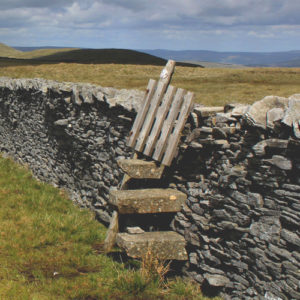
Hence the common addition of a small wooden gate, possibly spring-loaded so that it remains shut. This simple solution can catch you unawares – as On Foot’s Emma discovered when a gate swung shut and catapulted her from the top of the wall!
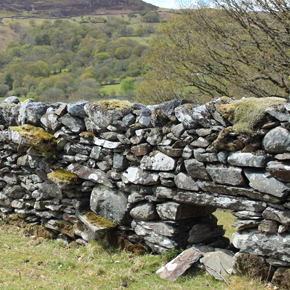
You may notice a ‘sheep creep’ near to a stone stile. This is a low gap for sheep to pass from one field to another without the need for a gate, but can easily be closed off when necessary. This one in North Wales is getting a little dilapidated…
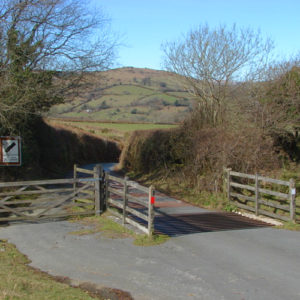
Cattle grid – found where a road passes from fields to unfenced pastures, this is a series of rails over a shallow pit which allows access for vehicles and walkers (with care!), but not animals. There’s usually a gate alongside, originally intended for horse-drawn traffic. It has been reported occasionally that sheep have learned to roll themselves across the grids.
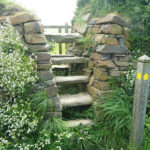
‘Cornish hedges’ are actually earth banks, often faced with stones and overgrown with bushes and other flora. There’s a multitude of designs of stiles in these hedges, usually made of long slabs of granite, laid in line with the direction of the hedge and stepped as necessary through a gap. Coffen stiles (horizontal at ground level) and cattle stiles (rising up and down) have spaces between the slabs to deter livestock, but which might be obscured by undergrowth.
Farmers are endlessly inventive, and you’ll probably spot many variations on these styles. On Foot’s Mary grew up on a farm in Wiltshire, and remembers her family’s ‘gap fillers’, which used up any unwanted bits of timber, metal and string to fill the gaps in hedgerows. You’ll also get accustomed when walking to dealing with fraying lengths of orange ‘baler twine’ holding gates shut with varying degrees of success.
And finally – if the sign encourages you to close the gate, make sure that you close the gate!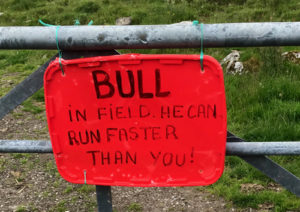
We begin 2022 on an optimistic note, with the launch of a new walking holiday in the Peak District. Together with local expert (and experienced On Foot walker) Richard, we’ve created an enticing linear walk full of history and landscape, from now-silent mills deep in steep-sided valleys to the wild moors surrounding the Vale of Edale.
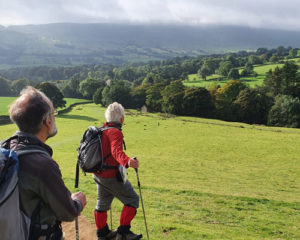 Our route starts in the cradle of water-powered industry, Cromford, where Thomas Arkwright set up his first factory in 1771, the earliest proper centre of mass production in Britain, perhaps the world. The buildings are now a museum, and well worth a visit to set the scene for this pilgrimage. From there the walk strikes off into open country to picturesque Bakewell, home of the famous Bakewell tarts and puddings, followed by a circuit across to the Derwent valley to visit Chatsworth House, one of the grandest country houses in Britain with a veritable cornucopia of art and glorious gardens and parkland.
Our route starts in the cradle of water-powered industry, Cromford, where Thomas Arkwright set up his first factory in 1771, the earliest proper centre of mass production in Britain, perhaps the world. The buildings are now a museum, and well worth a visit to set the scene for this pilgrimage. From there the walk strikes off into open country to picturesque Bakewell, home of the famous Bakewell tarts and puddings, followed by a circuit across to the Derwent valley to visit Chatsworth House, one of the grandest country houses in Britain with a veritable cornucopia of art and glorious gardens and parkland.
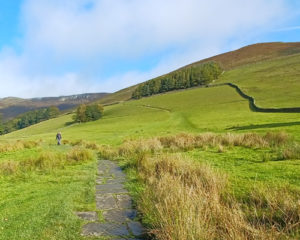 Next day, set off via Eyam, a pretty village with a bleak history in that it voluntarily cut itself off from the rest of the country during an outbreak of bubonic plague in 1665 as an act of self-sacrifice. The walk over moor and dale to Hathersage brings you to the edge of the ‘Dark Peak’, where you’ll experience the wild clifftop at Stanage Edge. You are now properly in the Peak District, and the next walk alongside the Derwent River and up Win Hill and Lose Hill brings a sense of arrival to your goal.
Next day, set off via Eyam, a pretty village with a bleak history in that it voluntarily cut itself off from the rest of the country during an outbreak of bubonic plague in 1665 as an act of self-sacrifice. The walk over moor and dale to Hathersage brings you to the edge of the ‘Dark Peak’, where you’ll experience the wild clifftop at Stanage Edge. You are now properly in the Peak District, and the next walk alongside the Derwent River and up Win Hill and Lose Hill brings a sense of arrival to your goal.
The pretty village of Edale is your home for the final two nights, base camp for an assault of Kinder Scout. This is an essential rite of passage for anyone who takes their walking seriously – it was here that, in 1932, ramblers from Manchester and Sheffield met in a ‘mass trespass’ to claim their right to leave those smoky conurbations and walk unhindered on open moorland, an act that would lead eventually to the creation of the National Parks and wider ‘rights to roam’.
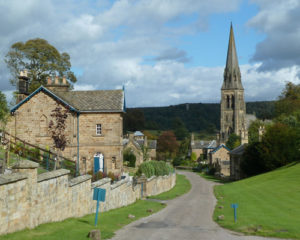 There’s a wonderful array of cosy B&Bs and friendly pubs and hotels where you can rest your tired feet along the way, and this route is easily accessible by train too. The full holiday is seven nights, and there are several shorter versions available too – or add nights if you’d like to spend longer to try some of the many great hiking trails in the area.
There’s a wonderful array of cosy B&Bs and friendly pubs and hotels where you can rest your tired feet along the way, and this route is easily accessible by train too. The full holiday is seven nights, and there are several shorter versions available too – or add nights if you’d like to spend longer to try some of the many great hiking trails in the area.
Find more about this walk in the Peak District here, or talk Debbie about whether this is the right holiday for you.

